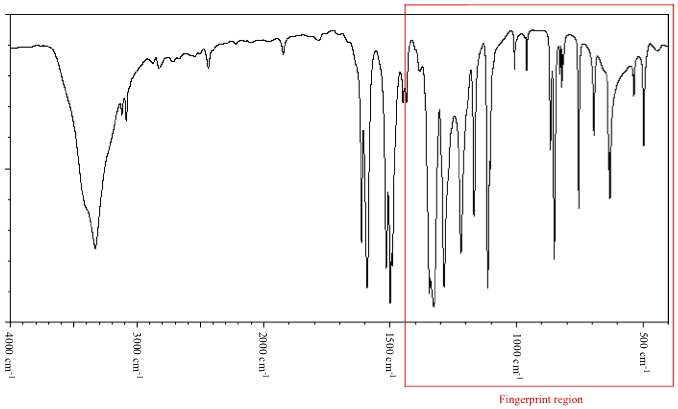How can I distinguish functional group region and fingerprint region in a infrared spectrum?
1 Answer
Many chemists consider
Explanation:
The functional group region runs from
A typical IR spectrum looks something like the one below.

The functional group region contains relatively few peaks.
These are typically associated with the stretching vibrations of functional groups.
The stretching vibrations of a functional group vary within a narrow range.
In the table below, notice how almost all the stretching vibrations are all above
(from wps.prenhall.com)
In the fingerprint region, the spectra usually consist of bending vibrations within the molecule.
The pattern of peaks is more complicated, and it is much more difficult to pick out individual bonds in this region.
The fingerprint region is important because each different compound produces its own unique pattern of peaks (like a fingerprint) in this region.
Once you think you have identified an unknown compound, you can compare its IR spectrum with that of a known sample of the compound.
If all peaks in the fingerprint region match, you have identified your compound.
Compare the IR spectra of propan-1-ol and propan-2-ol.
Both spectra are quite similar in the functional group region, but their absorption patterns in the fingerprint region are completely different.

